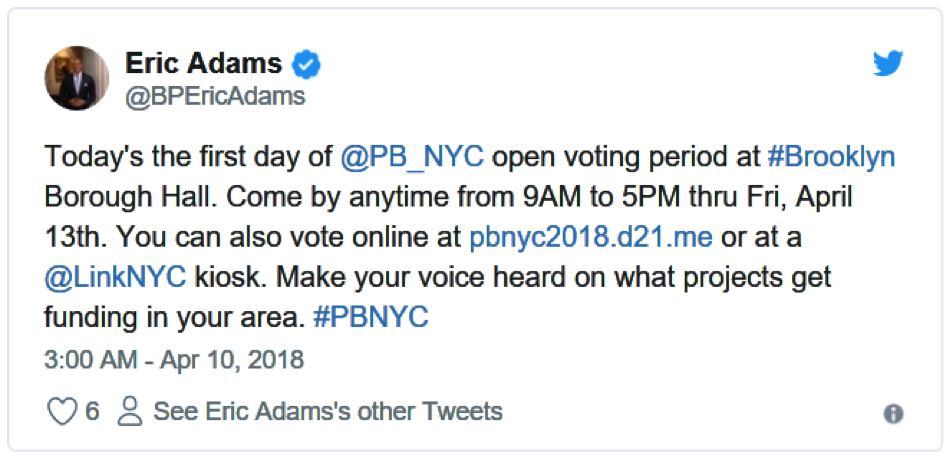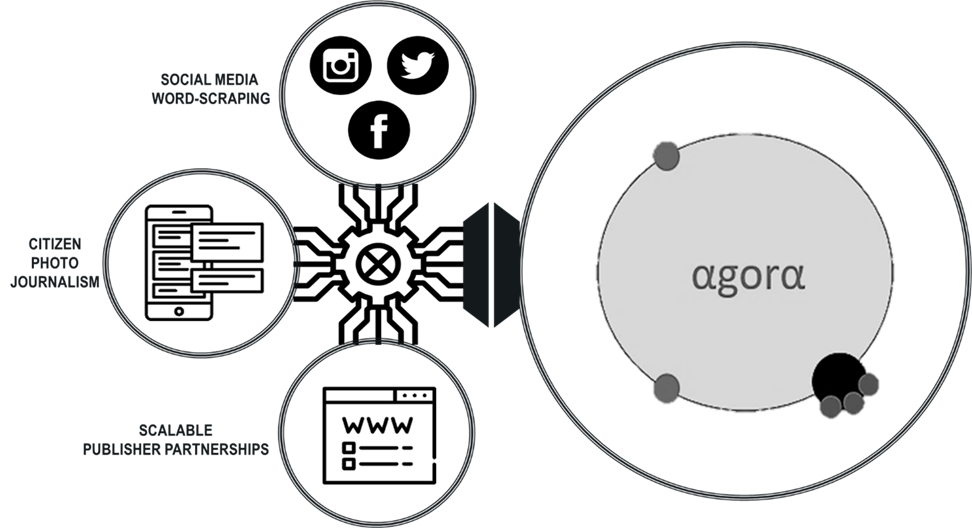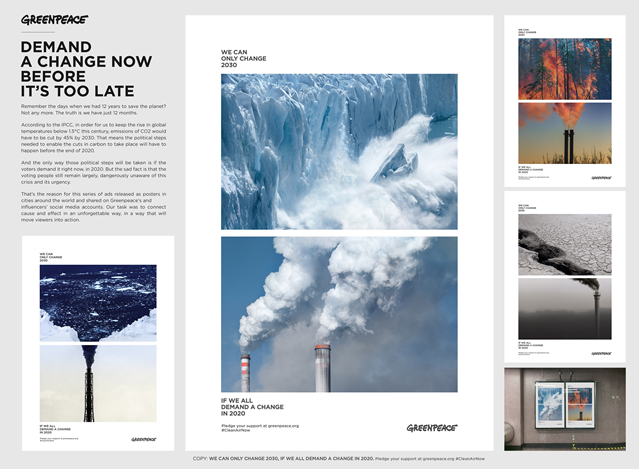Urban Brand-Utility: putting the citizen at the centre
Share

This is part two of this article, read part one here.
The making of the world’s most liveable city brand: an insider’s view from the top
by Jo Whyte, former executive marketing director at the City of Melbourne and executive head of marketing and communications at TAC
From 2015 to 2020, I was in the enviable position of leading the marketing and communication function for the City of Melbourne – a state capital that continues to be locally loved, globally recognised and consistently named as one of the world’s most liveable cities. Over these five years, I have learned much about the public realm and the importance of urban design strategy and its intent, to set the guard rails and create the canvas for what will and can be brought to life within its municipality. At times this can be complex, frustrating and stifling, and at other times it can be bold, inspiring and liberating in its intent to acknowledge the past and allow for a future that delivers economic activation and creates an inclusive city for all people.
It is in this setting that the tensions between the divergent views of best practice urban design versus best practice marketing and communication can be at their extreme. However, paradoxically, it is in this setting that we have the greatest opportunity to leverage these tensions, co-design with the community and bring together the best minds from urban strategy and planning with the digital media owners and the advertisers (marketing and communications practitioners) to truly collaborate to create a new best practice for public space – a shared approach that can offer the required amenity, visual appeal and one which is environmentally as well as commercially sustainable. It is time we elevated these discussions to the highest levels in government and commercial organisations, and created a movement to accelerate a shift towards better outcomes for citizens, customers and shareholders.
We need to move over the digital communications media platform debate, played out in the media as a fierce battle, where the parties take aim at each other, based on their traditional, legacy positions such as:
- Digital signage: media companies are ‘vandalising’ and ‘polluting’ the public realm with more and more non-traditional sites and a push into using new surfaces (IoT) to create new revenue opportunities (projections on buildings, footpaths, street furniture, payphone booths) for more advertisers to connect with audiences in more places, on rotation.
- Advertisers are using these digital platforms to deliver greater volumes of dynamic messages to achieve their strategic and tactical brand or product objectives. While these digital schedules can be programmed to test several creative executions and calls to action at various times of the day, allowing for greater optimisation and efficiency the counter view is audience fatigue and overstimulation.
- Councils are attempting to reduce carbon emissions as well as respect and plan for an urban design journey that best benefits its citizens and visitors. Some councils and cities around the world have gone to tender to proactively shape and create their ‘digital’ cities with commercial partners, and others have approached digital signage permits in a more tactical way, reviewing submissions on a case-by-case basis. There is an opportunity for councils to be both regulators and buyers of the digital media and that creates complexity in the approach.
I believe it is the right time in the history of marketing, to look at the ‘media platform system’ in a way that can develop empathy for the position of each player and use creative practice to work constructively and collaboratively on a shared solution. The UBU model provides a sound basis to kick-start and accelerate that conversation.
In my mind, the two inherent issues in the system to be overcome collaboratively are:
- How can we best manage the cost to our environment?
This question must be interrogated in detail and considered as a non-negotiable for the media owners, advertisers and government urban planners in partnership with their audiences and communities respectively. Perhaps this will be agreed with uniformity across urban planning authorities or perhaps the leading councils will set the best practice in relation to the issues of embodied carbon and purchase agreements for renewables.
- How can we best manage the cost of ‘digital advertising’ to the public and ensure a shared view on the best approach to urban planning and design?
In most cities, the digital footprint is growing and delivering a range of city operational efficiencies and allowing new and exciting messages to be shared with audiences. Our cities of the future will rely on digital signage for advertising and communication and wayfinding. So, it is absolutely the right time for urban planners to find ways to work with citizens to better understand the platforms for both ‘communications’ and ‘advertising’, as they consider the ‘public interest’ test.
Imagine for a moment if the public-private-community representatives were at the same table at the beginning of any project process and held an authentic mindset for both ongoing collaboration and shared principles to ensure an acceptable outcome for all parties. This would sharpen the focus on how best to reframe brand communications as a catalyst for sustainable development and ensure a radical innovation of the current approach. Imagine if each council could set the parameters for managing the cost to the environment and create an acceptable ‘share of voice’ agreement with the media industry. Ideally it would ensure that, embedded within each planning permit, all advertising could be programmed for commercial outcomes and for the benefit of the community. For example, at various times of the day all advertising across a city could be replaced with ‘calming images’ to encourage mindfulness, or used to advise of extreme heat, high pollen count or a terrorism threat. More recently, imagine if those agreements facilitated a council ‘takeover’ of all digital platforms to communicate relevant COVID-19, public announcements or messages of support for local businesses and/or our health professionals.
In a recent dispute, it was said that installing new payphones featuring large LCD screens capable of screening four advertisements a minute was ‘a Trojan horse’ for digital advertising. The City of Melbourne rejected Telstra’s application for approval to run commercial advertising on 81 proposed new payphone billboards. It was said that “public space should be protected” and “supersized phone booths are designed to generate advertising revenue for Telstra at the expense of our community”. However, a counterview may be that 81 proposed new payphone billboards may have provided 81 new touch points for community engagement, literally turning liabilities into new, profitable assets. An interesting case of civic engagement enabled by outdoor media took place in 2018 in New York City. The Participatory Budgeting campaign invited New Yorkers to decide how to spend $1 million of the public budget through digital panels spread across the city. This means that the same touch point used to communicate was also being used to enable the action it asks audiences to undertake – a paradigm shift where advertising can finally walk its talk.
Happy Women’s History Month! To celebrate, we’re sharing an awesome #ArtOnLink series in partnership with @illustrationdivision, ‘Women by Women’. Over the next month, look out for 22 pieces by 22 female artists illustrating life as women in NYC. ✨ Art by Silja Goetz. pic.twitter.com/9OchMcn2Ok
— LinkNYC (@LinkNYC) March 1, 2021
The company behind the ‘voting outdoor panels’, Intersection, started up by repurposing New York City’s obsolete pay phones as totems offering free broadband Wi-Fi connectivity to residents and visitors, and media space for advertisers. Besides supplementing New York’s broadband network and now enhancing civic life, the totems (aka LinkNYC) have projected an incremental US$500 million in ad revenue for the city as part of a 12-year contract, by unlocking new value from underutilised assets.
By way of provocation, I would like to invite readers from the media and advertising industry and councils/government planners to provide their thoughts on how we could engage effectively and co-create a digital media platform that has shared ambition and can embed better community and commercial outcomes. UBU is the best mechanism I have come across thus far. To close with a quote from Shakespeare, if “all the world’s a stage and all the men and women are merely players” then perhaps the time has come for the players to acknowledge we are on that same stage and would do well to work together on it. Let’s have a world with ‘digital advertising’ and ‘urban design’ and create a more sustainable communications platform for our shared audiences.
Marketing can become a participatory platform by putting the citizen in the centre
Over a decade ago CNN reported on a road in a state park in Kauai that was flooded, and the state government said it didn’t have the money to fix it. The park would be closed. Understanding the impact on the local economy, a group of local businesses chipped in, organised a group of volunteers and fixed the road themselves. From isolated cases of ‘civic DIY’, UBU can normalise a ‘Do it Ourselves’ (DIO) practice and become an engine for civic action, with commercial outcomes and enabled by brand communications.
Interestingly, in September 2016, the City of Gainesville in Florida and innovation firm IDEO, co-created the Department of Doing, aiming at creating a more competitive economy and becoming more citizen responsive. Advertising is not part of the equation, but the idea of marketing agencies working more closely with government departments may not be that far-fetched. To make the idea scalable, however, a digitised mechanism – as opposed to IDEO’s ‘private-public bureau’ – would be required.
Just like the ancient public Greek squares (the agoras) where direct democracy was born, this emerging participatory media can effectively collect complaints and suggestions for cities’ improvement, in real time. The next step for this would then be the matching of brands that align with a specific urban challenge. This way, the traditional public-private-partnership is flipped on its head. Instead of top-down municipal contracts, issues are identified by local constituents, informing future UBU programs that are requested by the people and enabled by advertising media.
Coupled with the hardware (e.g. brands’ touch points) is the requirement for an UBU operating system, provisionally named αgorα. According to Steve Ressler, CMO of Granicus (formerly GovDelivery), the only digital communications platform exclusively for government – serving over 1000 public sector organisations and 100 million citizens around the world – there are a few success factors to achieving public-private-people-platform solutions, being:
- online and offline collaboration
- seamlessness between citizens and government, and
- segmentation built for participation.
The αgorα proof of concept has been outlined as a machine learning-powered platform able to automate the many UBU tasks:
- citizen photojournalism participation, with geotagged and time-stamped complaints and ideas from cities’ residents anywhere in the world, allowing to segment citizens based on degree of participation
- passive collection of data via social media (word and image scrapping) and publisher partnerships
- complaints categorised in relation to local public utility services categories (e.g. water, education, leisure) and the UN’s global Sustainable Development Goals
- ideas categorised in relation to the Principles for Better Cities
- local constituents voting for what they consider to be the most critical issues, as well as the most appropriate ideas to solving those same issues or different ones
- matching of most voted issues and ideas with brands through a series of questions, algorithmically verified, including but not limited to category, target audiences, positioning, core values, marketing budget and broader business objectives where, essentially, the brand’s positioning is aligned with an urban initiative, and
- recommendations for UBU programs (e.g. media schedules) generated as the final output.
[quote style=’1′ cite=”]From self to city and civic participation to commercial transactions, boundaries keep blurring. CMayors, advertisers, media owners and citizen-consumers have a unique opportunity to write the guidelines that will help UBU flourish as a regenerative solution to cities, citizens and commerce.[/quote] When access to choices and opportunities of engagement are much more vital in driving economic prosperity, the traditional infrastructure along with the thinking of those times becomes obsolete. The visibility of values and how they connect at a systemic level becomes all the more important. Hence the uberfication of brand identity in making it not only meaningful, but also one that adds value to experience.
Perhaps there’s a need to find a new vocabulary for brands so marketers can adopt regenerative strategies, interested in improving overall well-being. Industry can no longer be separated from society; it has to demonstrate its viability in times of happiness and crisis. And when there is a global crisis what is interesting to observe is how brands communicate in such times. If the agenda is not human-centric but corporate-driven then the message can easily be lost in the world of data, as public bureaucracy has taught us so well.
The marketing of ideas for the ‘long now’
The UBU journey is one that started in 2015, in an article originally published by Marketing mag, when the concept, still in formation, didn’t even have a name. A few years later, accompanied by plenty of test-and-learn experiments, UBU has never felt stronger. Strong ideas eventually materialise. Charles Darwin, for instance, waited 20 years between completing The Origin of Species to publishing it in 1859. Yet, evolution by natural selection is regarded as humanity’s most powerful idea of the last century or so – perhaps just as powerful as Abraham’s radical monotheism or Sumerians’ invention of writing. As exciting as it is to be ahead of time, it can also feel like a lonely place where the future longs to meet present.
But it doesn’t have to be that way. Particularly when the future seems so close, giving the impression we are living in a long now or as deemed by the UN, a decade of action. Few brands have been able to express this sense of urgency as well as Greenpeace, through its recent campaign showing how our actions of today are impacting the next five minutes, weeks, months and years into the future. Time feels compressed like never before.
If the question is how, the answer is marketing. We must market the better ideas and influence more prosperous outcomes and make profitability a longer-term pursuit and not an instant gratification game – repeating Professor Gad Saad’s maxim, ‘Marketing is life and life is marketing’. It is because of marketing that turkey is eaten on Thanksgiving, that clan tartans and kilts became an identifier of Scottish Highlanders, that cultural norms are created and legitimised and so many ‘immemorial’ traditions, were actually invented. [quote style=’1′ cite=”]Marketing can create demand for the things that matter most in our lives.[/quote]
Journalists whose work is trustworthy have a greater influence on public opinion and if there’s a limitation set in the print or broadcast media that they work for, the digital platform gives them the prospect of augmenting their message and reaching out to people, engaging them by generating valuable content. In such cases, the journalist becomes the brand and not the organisation that they represent. Similarly, every professional under the marketing umbrella of activities can make use of their knowledge and toolbox and champion a new, broader meaning to the idea of brand and, by extension, enable the idea of a better world. After all, influence is a marketer’s most valuable currency.
In fact, a study published by Science Journal quantified the number of people who need to take a stand before they can affect societal change on topics considered universally important (e.g. social inequality, climate change, human rights, etc). And the magic number is a mere 25 percent of any group. Only a quarter of people need to adopt a new social norm to create an inflection point where everyone in the group follows.
Peer pressure plays a key role to effect change. The project’s researchers created a series of small online communities of 20 people and actually paid them to agree on a social norm. Once each group was in agreement, they paid a select few people in those groups to push for change, but also paid the remaining 75 percent twice or three times as much to resist the change. Surprisingly, social pressure to change was so great that minorities invariably converted majorities towards a new consensus.
Damon Centola, an associate professor at the University of Pennsylvania and the lead author of the whitepaper, said: “When a community is close to a tipping point to cause large-scale social change, there’s no way they would know this. And if they’re just below a tipping point, their efforts will fail. But, remarkably, just by adding one more person, and getting above the 25 percent tipping point, their efforts can have rapid success in changing the entire population’s opinion.”
In this sense, UBU needs to first own 25 percent of the global media spend to eventually mainstream and then reinvent the playbook. In other words, sharing an idea with a personal take on social media or in real life may be more effective than we think. Social pressure is, in fact, measurably meaningful. And unknowingly we may be the one person who stands between business as usual and real change for our world.
What change are you willing to market in our decade of action?
Authors:
 |
Sérgio Brodsky is the executive producer of Futurecast and a leading brand and foresight strategist. |
 |
Jo Whyte is the Head of the Marketing and Communications at TAC. |
 |
Puruesh Chaudhary is a futures researcher and strategic narrative professional and the founder and President of AGAHI. |
Cover Artwork:
Original illustration and artwork by Rafael Medeiros.












